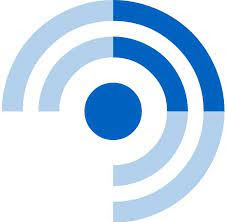Rwanda Extractive Industry Workers Union (REWU) has released findings from the rapid assessment on Rwanda child labor and access to child rights information through media.
Since January 2020, Rwanda Extractive Industries Workers Union (REWU) benefited from the support of World Vision for implementing the project entitled 'It takes every Rwandan to end Child Exploitation Campaign'. REWU executed this mandate in collaboration with different levels of stakeholders involved in community mobilization (local leaders, employers, teachers and school managers, Children themselves, parents, young mentors and community members). The main objective was to contribute to the promotion of child rights, breaking the child labor chain with the aim of empowering children to reach their maximum potential of exploring opportunities in a safe social environment. The discussions around child labor are also channeled through media houses in place
The assessment was conducted by REWU within four targeted districts namely Muhanga, Rwamagana, Gicumbi and Gakenke.
 The rapid assessment was motivated by the existing critical situation of child labor in order to collect accurate insights from beneficiaries and other decision-makers come out with more strategic measures of preventing any form of child labor.
Furthermore, through the rapid assessment, students, parents, and local leaders have identified the most followed media houses in the study sites. This rapid assessment aimed at measuring the extent of the community child labor and the access to child rights' information through media in Muhanga, Rwamagana, Gicumbi and Gakenke Districts, Rwanda.
Specifically, this rapid assessment was intended to:
- Identify working sectors with high number of child workforce;
- Measure the level of parents' involvement in child labor situation;
- Find the required solutions to promote child rights in respective communities;
- Assess the level of community perceptions towards child labor policies established by child right partners;
- Identify influential media houses to share information on child rights.
During the rapid assessment, participants provided information on different working opportunities that attract children to experiencing early exposure to work environment. While there is a considerable number of labored children, even many others are not directly working still face insecure and hazardous conditions.
In line with the used sampling, the most targeted sectors by child labor included industries (36%), domestic services (32.5%) and agriculture (31.5%).
In Rwamagana District, most of respondents confirmed to be involved in service (43%) and agriculture (38%) sectors.
In Gicumbi District, children prefer to be actively working in industry (48%) and agriculture (36%), and this situation seems to be similar to that of Gakenke District (35%) and (34%) respectively. Muhanga presents a slight difference in terms of child labor situation per working sector where 34% represents the industry sector, 33% the service segment and 33% the agriculture domain.
In total, twelve (12) Focus Group Discussions (FGDs) were conducted in 8 Sectors visited.
In Rwamagana District, the targeted sectors were Nzige and Rubona, Gakenke District (Rusasa and Rushashi), Muhanga District (Muhanga and Shyogwe) and Gicumbi District (Bukure and Shangasha).
In total, 143 participants among them 79 children and 40 parents and community leaders were reached through FGDs.
Among 89 children reached in four Districts, 46 girls (52%) and 43boys (42%) participated in FGDs from 4 schools including: GS Bugoba in Rwamagana District and GS Kabuga in Gakenke District, GS Shyogwe in Muhanga District and GS Bukure in Gicumbi District.
The female sex was dominantly represented among children in Gicumbi and Gakenke District, where girls were more motivated and active to participate during the FGD sessions while in Muhanga and Rwamagana boys were more available and active than girls.
 The results of this rapid assessment comprise also the identified main roots of child labor and came out with related recommendations for mitigating the factors that lead to such child abuse. The assessment report finds that main causes of child labor are:
(1) Parental poverty: lower family income, lack of school fees and other costs;
(2) Neighbors' increased needs in domestic services and economic activities;
(3) Poor control upon children by parents and guardians;
(4) Lack of education, awareness and sensitization on child labor consequences;
 (5) Search for cheaper workforce by entrepreneurs.
After assessment the proposed measures to tackle and mitigate child labor are:
(1) To empower poor families in order to improve their socioeconomic conditions by funding social programs and economic projects;
(2) Provide free education to all children from poor families;
 (3) Avail free school meals to all children from poor families;
 (4) Deliver vocational training to unemployed youths for skilled labor;
 (5) Sensitize the general population on child labor existing laws and policies;
During the rapid assessment, participants provided information on the different tools when they want to seek information or key messages from media on child labor.
The most used in general is the radio receiver while TV screen and computers are used by some wealthy families. Sometimes phone messages can be received too.
DOWNLOAD THE WHOLE REPORT HERE
 13
13The post Rwanda: Rapid assessment Report highlights source of Child Labor and way for mitigation appeared first on TOP AFRICA NEWS.


